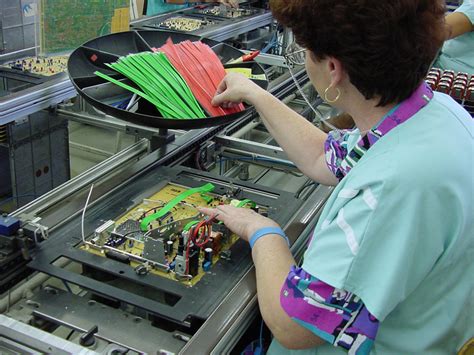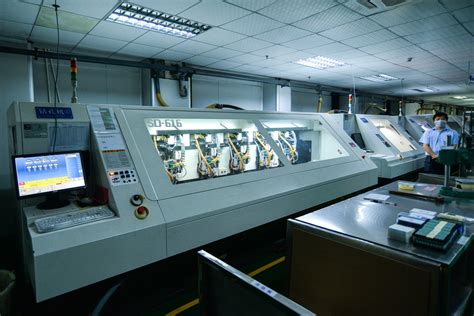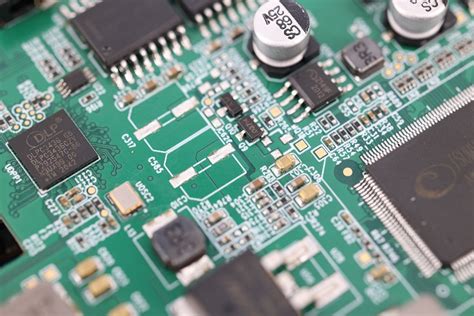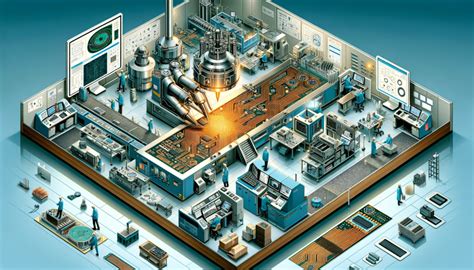Mastering Circuit Board Assembly: The Backbone of Electronics
Key Takeaways
Mastering pcb assembly is crucial for anyone involved in the electronics field. The pcba process is not merely a step; it is the foundation upon which reliable electronic devices are built. It encompasses a variety of skills, including the precise placement of components on a circuit board, effective soldering techniques, and the implementation of thorough quality control measures. Familiarity with essential tools like soldering irons, multimeters, and reflow ovens is imperative for achieving high-quality results. Additionally, understanding common challenges, such as thermal management and component misalignment, can facilitate smoother assembly processes. Practicing best practices in the realm of pcb assembly not only enhances efficiency but also significantly boosts the durability and performance of electronic products. By keeping abreast of innovations and trends in circuit board technology, professionals can ensure they remain competitive in this ever-evolving industry. Overall, continuous learning and application of these concepts are vital for mastering the complexities of pcba, leading to successful outcomes across various electronics applications.
Introduction to Circuit Board Assembly
Circuit board assembly, commonly referred to as PCB assembly or PCBA, is a fundamental process in the creation of electronic devices. This intricate procedure involves various stages that transform a flat circuit board into a functional unit ready for integration into broader electronic systems. The process begins with the careful placement of electronic components onto the circuit board, which often requires precision and attention to detail. Each component plays a vital role in ensuring that the circuit performs its intended function effectively. As technology continues to advance, the demand for more compact and reliable circuit boards leads to increasingly complex designs, making it imperative for assemblers to master advanced techniques in pcb assembly. With a firm understanding of both the theoretical and practical aspects of PCBA, technicians can overcome common challenges such as misalignment and soldering issues, thus guaranteeing high-quality outputs. Ultimately, mastering circuit board assembly not only enhances individual skills but also strengthens the overall integrity and longevity of electronic products in a rapidly evolving market.
The Importance of Circuit Boards in Electronics
Circuit boards, commonly referred to as pcbs, serve as the fundamental backbone of numerous electronic devices, facilitating connections between various electronic components. This intricate assembly, known as pcb assembly or pcba, is pivotal for ensuring that signals are correctly transmitted and that devices function efficiently. A well-designed circuit board not only optimizes the performance of the electronics but also maximizes reliability and durability through precise connections and layouts.
In today’s fast-paced technological landscape, understanding the significance of circuit boards is essential for anyone involved in electronics. They enable everything from simple gadgets to complex machines to operate seamlessly. With advancements in technology, modern pcba processes incorporate innovative materials and design techniques that enhance performance while reducing costs.
To illustrate this importance further, consider the following table showcasing different applications of circuit board assemblies:
| Application | Importance |
|---|---|
| Consumer Electronics | Powers devices like smartphones and TVs |
| Automotive | Controls critical vehicle functions |
| Medical Devices | Ensures accuracy in diagnostics and monitoring |
| Industrial Equipment | Enhances automation and efficiency |
| Aerospace | Guarantees safety and reliability in flight systems |
In summary, the significance of circuit boards in electronics cannot be overstated. As technology continues to evolve, mastering pcb assembly techniques becomes crucial for maintaining competitive advantages in design and functionality across various electronic applications. Understanding these assemblies not only prepares professionals for future challenges but also contributes to creating reliable products that society depends on daily.
Key Components of Circuit Board Assembly
At the heart of pcb assembly lies a variety of essential components that work collaboratively to ensure the functionality and reliability of electronic devices. A fundamental element is the printed circuit board (PCB) itself, which serves as the physical foundation for electronic connections. This board is typically made from materials like fiberglass or composite epoxy, offering durability and electrical insulation. An equally vital component is the solder, used to connect various electronic parts to the PCB. The correct soldering technique is critical for creating strong electrical connections and preventing failures in the circuit.
Other critical elements include resistors, which help control current flow, and capacitors, essential for energy storage and smoothing out signals. Microcontrollers also play a significant role in controlling devices by interpreting inputs and producing outputs as required. Additionally, connectors ensure that different parts of a device communicate efficiently.
To enhance your skills in pcba, it’s advisable to familiarize yourself with these components’ specifications and functions. Understanding how each element contributes to the overall assembly process enables better decision-making during design and troubleshooting phases. Developing a set of best practices for handling these components will not only improve efficiency but also elevate the quality of your circuit board assemblies.
“Always keep your workspace organized; it will save you time and reduce mistakes during assembly.”
This attention to detail is essential in mastering pcb assembly techniques, thus building reliable circuits that form the backbone of electronics today.
Essential Tools for Effective Assembly
To master pcb assembly, having the right tools at your disposal is paramount. The success of any pcba project relies heavily on utilizing tools that ensure precision and efficiency during the assembly process. Essential tools include a reliable soldering iron, which is fundamental for connecting components to the circuit board. A soldering station equipped with temperature control allows for improved accuracy, helping to prevent damage to sensitive components. Additionally, a set of tweezers and automated pick-and-place machines can significantly enhance your ability to position components accurately on the board.
Another critical tool in circuit board assembly is a robust multimeter, which aids in testing electrical connections and verifying that circuits are correctly assembled before moving forward with further testing. Considering the increased complexity of modern designs, investing in a high-quality microscope can facilitate detailed inspection of solder joints, ensuring high manufacturing standards are met.
Furthermore, organization aids such as component trays or storage solutions help keep parts orderly and easily accessible, contributing to smoother workflows during demanding projects. By using these essential tools effectively, you will enhance your ability to produce reliable pcb assemblies, leading to better overall outcomes in electronic manufacturing initiatives.
Best Practices for Soldering Techniques
Mastering soldering techniques is essential for achieving high-quality pcb assembly and ensuring the reliability of your circuits. Whether you are working on a hobby project or a professional pcba, understanding the art of soldering can significantly elevate your work. Firstly, always start with a clean surface; impurities on both the circuit board and the components can result in poor solder joints. Cleanliness is key. Using flux helps improve the adhesion of solder to the surfaces, allowing for stronger connections.
When applying heat, ensure that you’re using the correct temperature—too high can damage components, while too low may lead to cold solder joints that are prone to failure. The technique of heating both the component lead and the pcb pad simultaneously for optimal timing can create a good joint. After heating, introduce solder to draw it into place; this technique fosters strong electrical connections and mechanical support.
It is also important to avoid excessive solder, which can lead to bridging—unwanted connections between pads that can short-circuit your design. Aim for a small, shiny bead of solder that appears concave instead of a blob. Practicing on scrap boards before moving on to actual projects helps refine your skills and build confidence in your technique.
Finally, investing in quality tools like a good soldering iron with adjustable temperature control and various sizes of solder will enhance precision and comfort during assembly. By adhering to these best practices in soldering, you’ll improve not just your efficiency but also the overall quality of your pcba, ensuring every circuit functions as intended and stands the test of time.
Common Challenges in Circuit Board Assembly and Solutions
The process of pcb assembly is intricate and often presents various challenges that can disrupt the pcba workflow. One of the primary difficulties encountered is the issue of misalignment during the placement of components, which can cause significant problems in both functionality and reliability. To combat this, utilizing high-quality assembly tools that provide precise alignment capabilities is essential. Another prevalent challenge involves soldering defects, such as cold joints or bridging, which can lead to circuit failure. Adopting best practices such as maintaining optimal soldering temperatures and using suitable solder types can mitigate these risks. Additionally, inspection is crucial; incorporating automated optical inspection (AOI) in the assembly line can greatly enhance error detection before final production. Adhesive-related challenges also arise, particularly with component placement—ensuring proper adhesive application and curing methods ensures components remain secure throughout operation. Lastly, keeping up with evolving technologies and materials in pcba requires continuous education for assembly personnel to master new techniques effectively. By addressing these common challenges with strategic solutions, manufacturers can significantly improve the quality and reliability of their circuit board assemblies.
Quality Control Measures in Circuit Board Production
In the realm of pcb assembly, quality control is a pivotal aspect to ensure that every circuit board functions reliably in its intended application. This process begins with the meticulous selection of key components, as defects in any single piece can compromise the entire assembly. To maintain high standards, it is essential to implement systematic inspections at various stages of production. Employing techniques like Automated Optical Inspection (AOI) allows for real-time checks on the accuracy of solder joints and component placements, significantly reducing errors. Equally important is the practice of Functional Testing, which evaluates the completed pcba to ensure it performs its intended functions under normal operating conditions. Implementing these quality control measures not only enhances product reliability but also minimizes waste and rework, fostering a more efficient manufacturing process. Investing in robust quality assurance protocols ultimately leads to greater customer satisfaction and upholds the integrity of electronic devices that rely on circuit board assembly.
Future Trends in Circuit Board Technology
The landscape of pcb assembly is continually evolving, driven by advancements in technology and the increasing demand for compact, efficient electronic devices. Notably, there is a growing emphasis on miniaturization, where pcba designs are being refined to accommodate smaller spaces without compromising functionality. This trend is leading to the adoption of advanced materials such as flexible printed circuit boards, which allow for innovative configurations and applications in wearables and mobile devices. Moreover, the shift towards automation in circuit board assembly processes is enhancing precision and reducing human error, making it possible to meet high-volume production demands with consistent quality. Emerging trends also spotlight the integration of Artificial Intelligence and Machine Learning into pcb assembly, streamlining quality control processes through predictive analytics that foresee potential defects before they arise. As sustainability becomes a pivotal concern, there is an increasing focus on eco-friendly practices within pcba, including the use of recyclable materials and processes that minimize waste. Keeping abreast of these trends not only equips engineers with a competitive advantage but also fosters innovation in circuit board technology that ultimately influences how we interact with electronics in our daily lives.
Conclusion
In summary, mastering pcb assembly is essential for anyone looking to excel in the field of electronics. This intricate process serves as the backbone of any electronic device, ensuring that components are not just placed but are securely connected to function effectively. By understanding the critical role of pcba, one can appreciate the importance of thorough training in soldering techniques and the utilization of the right tools for successful assembly. Moreover, adhering to best practices and implementing rigorous quality control measures will significantly enhance the reliability and performance of electronic circuits. As technology continues to advance, being aware of emerging trends in circuit board technology will be crucial for any professional in this domain. Ultimately, a solid grasp of these fundamentals will enable individuals and teams to innovate and improve upon existing designs, paving the way for future developments in this ever-evolving industry.
FAQs
What is PCB assembly?
PCB assembly, or Printed Circuit Board Assembly, is the process of connecting electronic components to a printed circuit board to create a functional electronic device.
Why is PCBA important?
The PCBA process is crucial because it allows for the integration of various electronic components, ensuring they work together effectively in a circuit. A well-executed assembly is essential for the reliability and performance of electronic devices.
What are common tools used in PCB assembly?
Essential tools for pcb assembly include soldering irons, reflow ovens, and pick-and-place machines. Each of these tools plays a significant role in ensuring that components are accurately placed and securely soldered.
How do you ensure quality in PCB assembly?
Quality control measures such as visual inspections, automated optical inspection (AOI), and functional testing are essential for identifying defects early in the pcb assembly process, minimizing costs associated with rework.
What are some challenges faced during PCBA?
Common challenges include component misalignment, insufficient solder, and thermal management issues. Strategies to overcome these challenges involve meticulous planning and utilizing the right tools and techniques during the assembly process.
For further insights on mastering circuit board assembly techniques, please click here: Mastering PCB Assembly.







